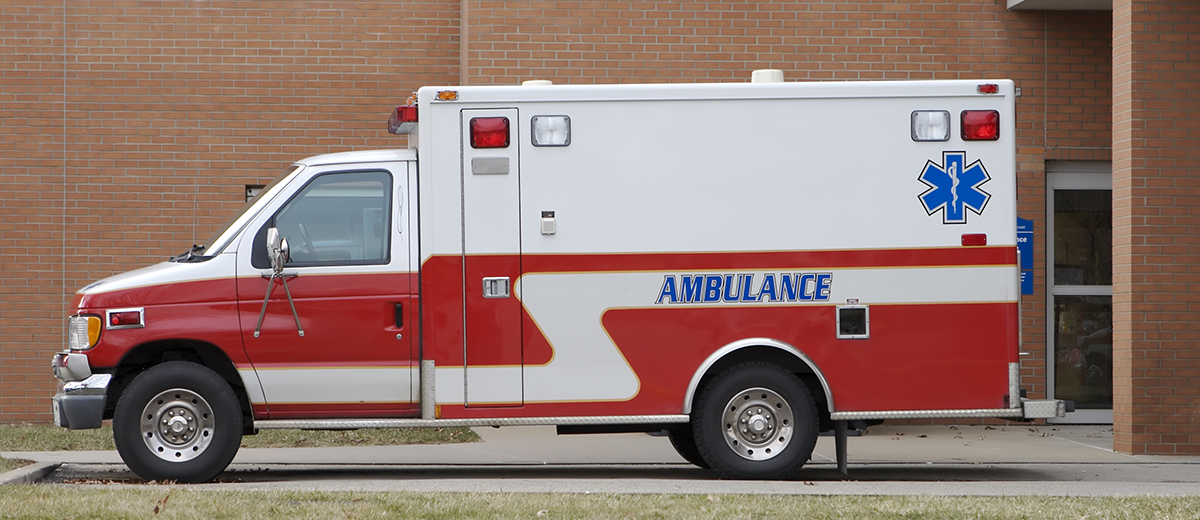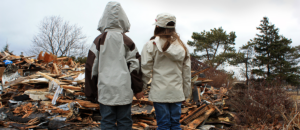Originally published in A Long Way from Henry Street, Vol 2, and featured in our Fall 2021 flyer, Vicki Senter, RN reminds us that children may have more worries than we know. An important lesson to keep in mind, especially given the impact that COVID-19 has had on many families.
Read Vicki’s story …
A student ran into my office. He was short of breath but managed to tell me that someone had fallen and was bleeding. He was unable to tell me what happened or who had fallen. I grabbed a first aid kit, locked my office, and went to the west hallway as directed by the student. My mind started racing through the standard protocol for any emergency. On the way, I overheard a page directing me to the library. My adrenaline started pumping a bit faster.
When I arrived, Brad was on the floor, and a puddle of blood was growing around his head. He was fully conscious and attempting to stand. “Brad, I need you to stay still for a minute. I need to check you out,” I said.
He relaxed. I asked several teachers to clear the hallway for Brad’s privacy. I put on some gloves and started my head-to-toe assessment. While doing this I was able to ask Brad what happened. He wasn’t sure. He said he was walking with friends and then his head hit the door jamb of the fire doors. He denied feeling dizzy or anything odd before he hit the door. He thought he might have been accidentally shoved into the door. Finding no other trauma except the cut on his head, which had stopped bleeding, I let Brad slowly rise to a seated position. He reported he felt fine. I sent for the wheelchair. Brad was able to get into the wheelchair without incident. I brought him back to my office.
Once in the quiet calm of my office, one of the teachers told us that an ambulance was on the way. Brad became very upset. He began to yell, “I’m not going in no ambulance!” He tried to get out of the wheelchair to leave the nurse’s office.
“Brad, stop. You need to calm down.” I replied.
He shouted, “There is no way I am going in an ambulance!” The teacher in the room said, “You have to, they’re on their way!”
Brad started yelling again.
I asked the teacher if she could go to the main office to check if Brad’s mom had been called. This gave me a moment alone with Brad. I crouched down so I could be at face level with him. I told him, “You don’t have to go to the hospital by ambulance, but you do have to go to the hospital. You need stitches. Your bleeding has stopped so if Mom wants to bring you, she can. I can’t stop the ambulance from coming. Once they get a call they have to come. They have to follow the laws that apply to them and that’s one of them. They will check you out when they get here. You do not have to go with them.”
Brad calmed down. Just then, the EMT’s arrived. They checked him out. Brad’s mom arrived while they were completing their assessment. They encouraged her to allow them to transport Brad by ambulance to the hospital. Before Brad’s mom could reply, Brad started yelling that he wasn’t going to the hospital by ambulance. His mom asked the EMT’s if it would be okay if she brought him to the emergency room on her own. They discouraged the idea but said it would be okay. They said it was imperative that she take him; he needed staples to close the wound. Mom assured them she would take him right away. They all left. I treated the next dozen or so students that entered my office, which left me little time to think about Brad.
About fifteen minutes before the final bell, Brad and his mom came back. They reported that Brad received eleven staples to close the wound on his head. They both thanked me for helping him. Brad left to go to his locker, giving me a chance to talk with his mother. She told me that they did not have insurance and that is why Brad was so upset at the possible ambulance ride. He was concerned about the cost. Brad gave his mom most of the money he earned from his part-time job. He was worried about his mom. Once I knew this, Brad’s behavior made perfect sense.
That was the day I realized how different it is to be a teenager today. As a child, I never gave healthcare a second thought. My parents took care of it. Today is so different for our youth. They worry about so many things they can’t control or change. Brad is living a teenager’s life with adult worries and responsibilities. I take this lesson with me every day. Whenever a student enters my office, I remind myself that this young adult may have more worries than I know. It helps me to be more understanding, more compassionate.





